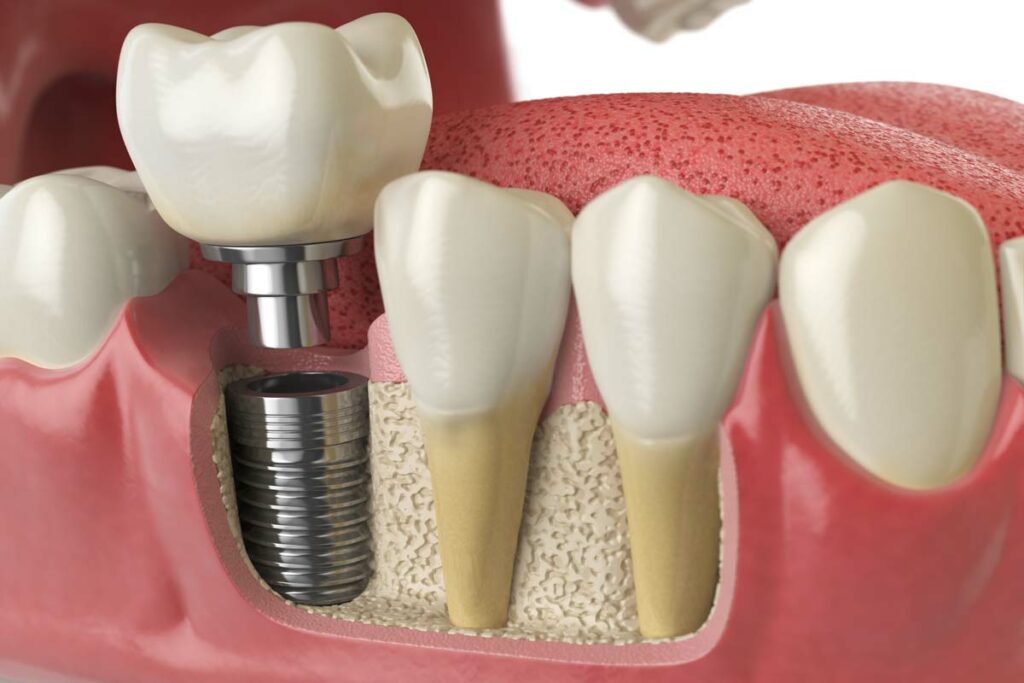1. In which cases can implant prostheses be made?
From a prosthetic point of view, implant restorations can in principle be made for all types of tooth loss.
Yet there are cases where we strongly recommend the implantation of an implant, such as:
- complete edentulous jawbone
- one or two-sided end-of-line deficiency
- too long a gap between rows
- missing a tooth
- in certain diseases where a removable prosthesis would make it difficult for the patient to breathe or digest (epilepsy, asthma, gastritis).
Before dental implants are placed, it is important that the dentist is satisfied that the patient is suitable to receive the implant, i.e. that the patient’s general health is good and that the quality and quantity of bone is suitable for the implant.
The quality and quantity of bone are the factors that most critically affect the chances of implant success, and whether the implants can be loaded with a prosthesis depends on these factors.
If insufficient bone is available in quantity and/or quality, bone replacement surgery should be considered.
2. When can the implant be placed after tooth extraction?
After tooth extraction, there are several views on when to place the implant. The current commonly used classification distinguishes immediate, delayed and late implantation. From immediate implantation surgery performed at the same time as tooth extraction, the Delayed implantation 6-10 weeks later, the and the late onesare done 6 months after tooth removal. During the surgical planning, the doctor decides which technique to use for the case in question and which is the best choice for the patient to achieve the best and most durable result, based on a detailed analysis (X-rays, CT scans).
3. When does the implant become load-bearing, i.e. when can the prosthesis be prepared?
This issue has been the subject of much debate in recent years. There have been many scientific studies on this. If the recovery conditions are good, it can be said that it is recommended 3 months for the lower jaw and 4-6 months for the upper jaw. This period is necessary because research shows that better healing results are achieved when the implant is not yet loaded than when it is not.
4. What kind of tooth replacements can be made for implants?
The advent of implants has opened new doors in medicine, including dental and oral surgery. With their appearance, it is now possible to create tooth replacements that feel 100% like the patient’s own, even on a complete edentulous jawbone. These fixed implants provide maximum safety for the wearer, meeting both aesthetic and functional needs.
There are several types of dental prostheses that can be made on implants:
- crowns made on implants
- implant bridges
- removable, plate prostheses anchored on implants.
References Divinyi- Oral implantology (Semmelweis Publishers)

